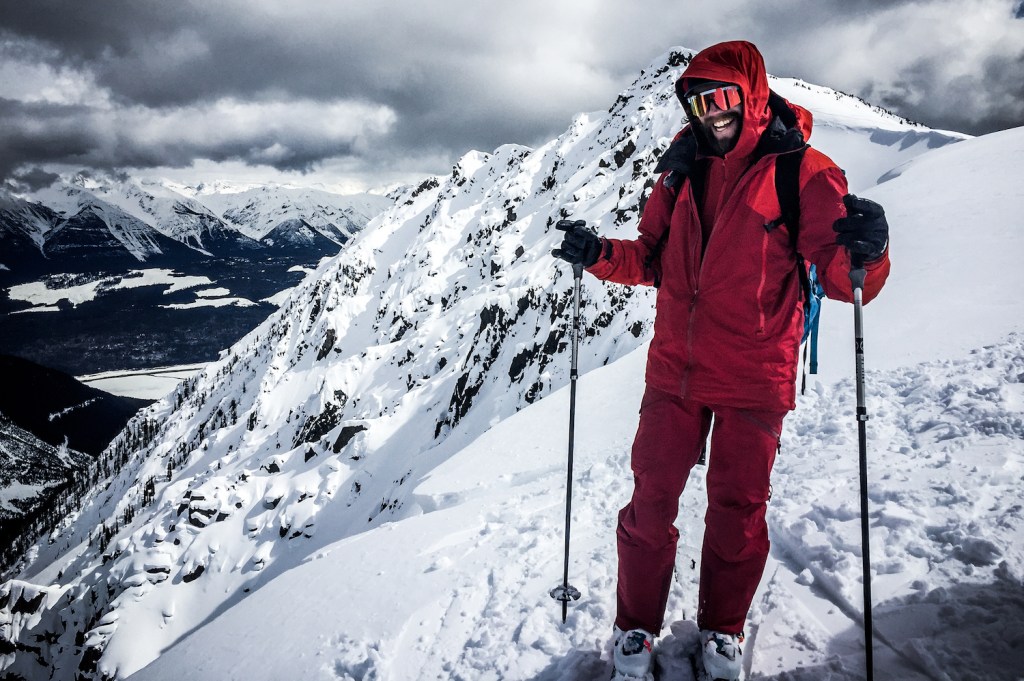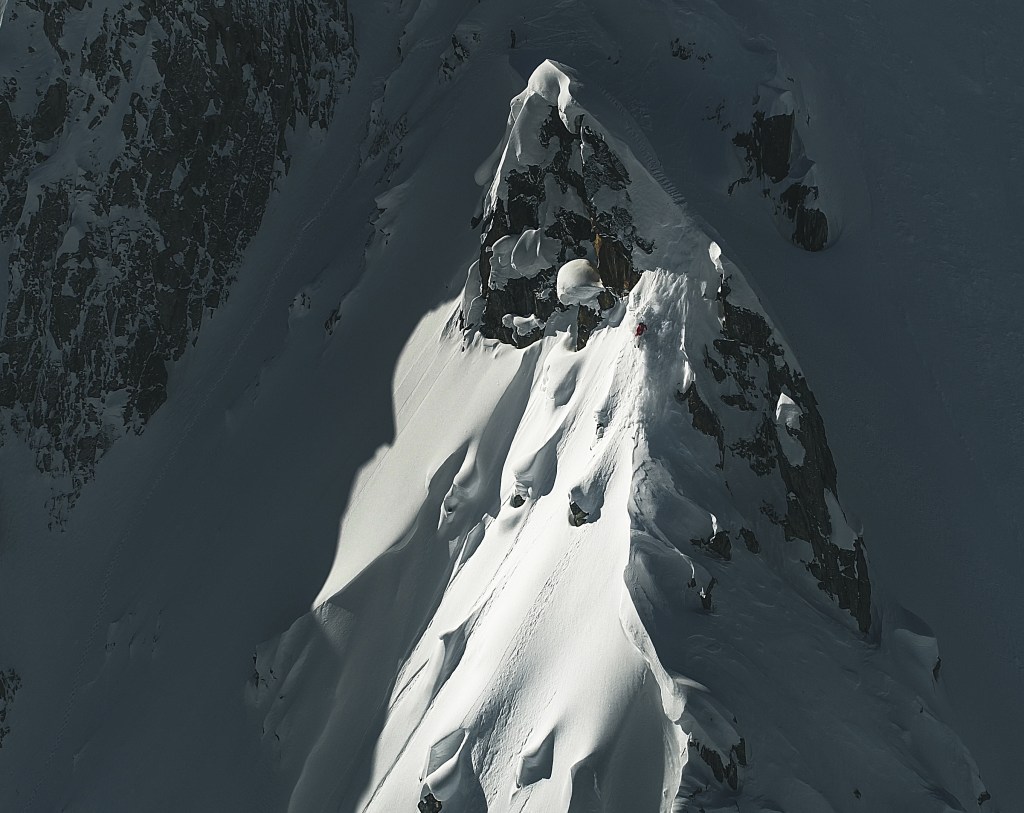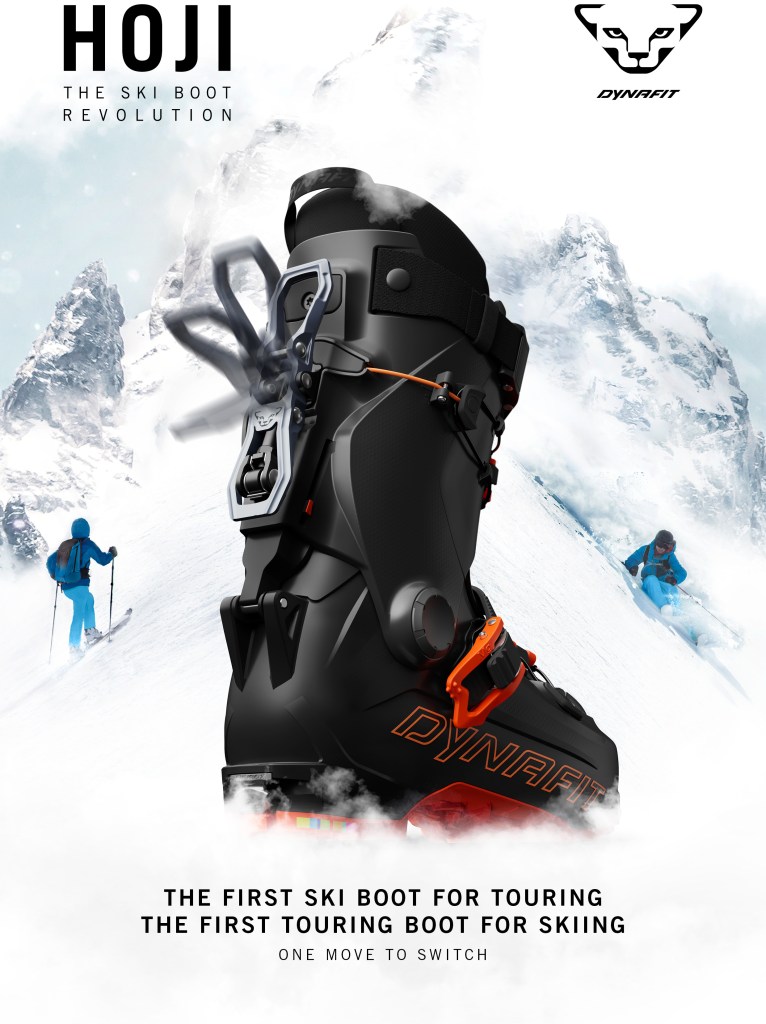When Eric Hjorleifson was growing up in Canmore, Alberta, his parents set an example that would guide his life. Self-made worker bees, Pat and Tom Hjorleifson did everything from road construction to carpentry while raising Eric and his brother, Steve. Eventually they built a series of spec houses before Tom became a stone mason and hired his teenage boys to work.
“My parents’ message was: You can make your own way in our very fortunate western world here. And if there’s an opportunity or a dream, follow it,” Hjorleifson says. “I think that’s a big part of how my skiing career was shaped.”
The defining chapter of that career, at least so far, takes place this winter. Hjorleifson, 35, is the subject of a Matchstick Productions biopic—titled “HOJI” after his superhero nickname—premiering Oct. 17 in Boulder, Colorado, and touring across the continent thereafter. In addition, this fall, Dynafit is debuting a revolutionary backcountry ski boot, the HOJI Pro Tour, which Hjorleifson conceived and designed in association with Dynafit binding inventor Fritz Barthel.

Hjorleifson has been tinkering with gear, from boots to jackets to skis, for years now. (Photo Credit: MSP Films)
Much of Hjorleifson’s story is known: He grew up ski racing until he was 16, at which point he shifted to freeriding, influenced by the New Canadian Air Force. Legendary Banff native and backcountry guru Andrew Sheppard mentored him. Hjorleifson migrated to Whistler, B.C., and filmed with Matchstick for 15 years, compiling a reel that provided the action-packed backbone for his biopic.
Somewhere along that line, fellow Canadian freeride star Rory Bushfield started calling him “Hajor,” which morphed to “Hoj” and later “Hoji.” His talent on airy natural terrain and affinity for avoiding the spotlight created something of a savant’s reputation.
But there’s a good chance the ski world will remember his work on technical products for even longer than his skiing. He’s been tinkering behind the scenes for Arc’teryx, Dynafit and other brands for more than a decade, to much internal acclaim and occasional outside renown. Still, you could call his new Dynafit boot, which allows one to switch between uphill and downhill modes with the flick of a heel switch—no buckle or pant adjustment necessary—his magnum opus. It is a significant leap forward from the Vulcan, which came from Hjorleifson’s “Frankenboot,” and is basically the holy grail that modern backcountry skiers have long coveted: a light-and-fast boot that supplies enough power to jump 60-foot cliffs and—the cherry—not force you to bend over between runs to switch between ski and tour mode.
The concept sounds simple enough, but only after Hjorleifson and Barthel went ski touring at a Dynafit marketing event five years ago did it begin to take shape. They realized they enjoyed each other’s company, and Hjorleifson confided in Barthel, who is known across Europe as a pioneer in technical product design.
“I knew what I wanted to do and what I needed to do, but I didn’t know how to achieve that,” Hjorleifson recalls. “Over some skiing together and drinking beers and looking at boots with Fritz, I told him about my idea. Right away he was like, ‘Well, why don’t we just make what you need? I have a workshop, I can build anything you need or we can go 15 minutes to the village and they can make it.’”

Hjorleifson’s skiing has placed him in a special category of mountain mythology. (Photo Credit: MSP Films)
Barthel, 58, invited Hjorleifson to his farmhouse in Bad Häring, Austria, later that winter, where they spent three weeks designing a prototype in his basement. “He immediately fell in love with my milling machine,” Barthel laughs, adding that the concept, later named the Hoji Lock System, fascinated him. “I hated this for decades, bending down, always changing into ski mode. You have to pull the pants up and then try to fix that stuff. I said to him, ‘You want this stuff because of performance reasons; I want this stuff because of laziness reasons.’”

Introducing the Dynafit HOJI Pro Tour, out this fall.
Their work produced a boot for Hjorleifson to test later that winter and into the next, with promising results. Still, a key designer at Dynafit’s production facility in Montebelluna, Italy, didn’t believe in the product—or the idea of an outsider telling him how to design a better boot. Only after that employee left the company did the project move forward. “We lost two and a half years, but the whole time we were preparing different prototypes,” Barthel says.
The 120-flex, three-buckle HOJI Pro Tour weighs just 6 pounds, 6.2 ounces and comes in a narrow 101-millimeter last. It won an ISPO award and has been hailed by everyone from fellow freeride pros to Barthel’s skeptical ski-touring partners in Bad Häring. The boot represents an anomalous recipe in the technical product realm: a North American freerider opening the eyes of one of the light-and-fast genre’s original gangsters, deep in the Austrian Tyrol.
“Everything that he said, ‘Oh, we have to do this and this,’ proved right,” Barthel says. “For me it was nice to learn something new.”
For Hjorleifson, it was the latest example of him finding his own way in life, and following it.
